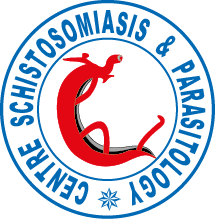Change of mate and mating competition between males of Schistosoma intercalatum and S. mansoni
Abstract
Previous studies on mating behaviour of Schistosoma intercalatum and S. mansoni, two human schistosomes which may overlap in parts of Africa, have shown that in mixed infections in mice there are no physiological barriers preventing heterospecific pairings. However, when choice is possible, matings occur preferentially between partners of the same species. In this paper, further experimental studies on mating behaviour of the two species were conducted. Sequential infections showed that heterospecific pairs of worms change partners to homospecific pairs when given the opportunity. The change of mate is a progressive process requiring up to, at least 8 weeks, and this phenomenon is due to the male worm seeking the appropriate female. S. mansoni males are better at pairing with females than S. intercalatum males, and they will change partner to pair with homologous females in preference to heterologous females whenever given the opportunity. Moreover, in the absence of S. mansoni female worms, unpaired S. mansoni male worms pull away female S. intercalatum from male S. intercalatum. It appears from this study that S. mansoni males are much more competitive than S. intercalatum males at pairing with females, and this is a disadvantage for S. intercalatum in situations of sympatry.
